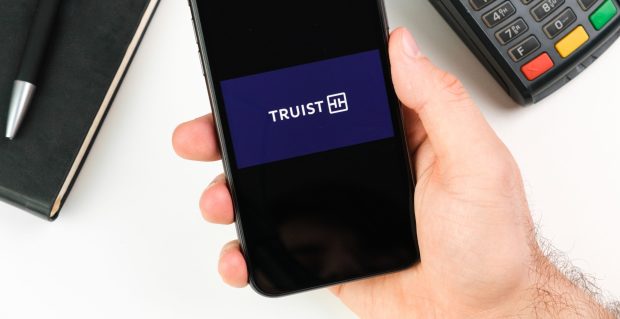Truist on Maintaining Accessibility Across All Banking Channels

Twenty-six percent of Americans have a disability of some kind, and FIs must design their digital and in-person solutions with this in mind. In the latest Digital-First Banking Tracker, Truist’s Miranda Capra talks about the role of alternate text options and multichannel support to boost inclusivity and satisfaction among customers with impairments.
The pandemic accelerated the digital transformation in banking, but many consumers still prefer to bank through physical channels — particularly customers who have disabilities. Given the range of impairments, from sight and hearing to cognitive disabilities, creating digital channels that serve all customers can be particularly difficult.
Miranda Capra, director of inclusive design at financial services company Truist, explained that various accessibility tools are built into mobile devices to assist individuals with impairments. To take full advantage of those tools, however, financial institutions (FIs) must be aware of how they work and deliver content that works with them.
“We created a design system with modular components, like radio buttons, check boxes, images and input fields, all of which was thoroughly checked for accessibility for people with disabilities and impairments,” Capra told PYMNTS in a recent interview. “This includes text alternatives for people who cannot see images or colors and keyboard support for people who cannot use a mouse.”
FIs have multiple sources for guidance on designing digital channels for accessibility, such as the Web Content Accessibility Guidelines (WCAG), an international reference created by the World Wide Web Consortium (W3C), as well as the Americans with Disabilities Act and Section 508 of the Rehabilitation Act. Capra said the WCAG also is set to expand to provide guidance for more technologies.
Looking to Customers’ Needs
Often the best guidance that FIs can receive, however, comes from listening to customers.
“Our approach to product design at Truist is guided by our purpose and strategy — creating experiences that allow clients to have control over their finances without being dependent on others, to help them live happier lives,” Capra said. “We make sure that our products are relevant by listening to our clients — understanding how they manage their finances and use their bank accounts, their pain points, their unmet needs — and using their feedback to find ways that enhance or streamline our product offerings and improve our client experience.”
That approach, she said, ensures FIs can create digital channels that not only meet the banking needs of customers with disabilities, but also improve their banking experiences.
Staying Accessible in a Digital Age
Making digital channels accessible to all is vital, but FIs still need a robust omnichannel approach to accommodate all customers. The promises of technology are significant, but FIs must be cognizant of how much customers depend on various channels — including physical — to meet their needs.
“Technology, done right, can play the role of enabler, allowing clients who can’t drive to bank from home or clients who can’t read a paper statement to listen to it read out loud to them,” Capra said. “But digital is not always the right channel, so our Journey Transformation specialists review all parts of a client’s interaction with us — across digital, branch and telephone — making sure that all aspects of the experience are well-designed and [that] handoffs between channels are smooth.”
That way, she said, the channels that best suit customers’ needs are always available to them.
Making the Team Work
Meeting everyone’s needs requires FIs to optimize each banking channel for accessibility, making it a foundational aspect of every product and service. That means the teams creating products and services need to have the proper training and information.
“We make sure that all teams designing and building digital banking experiences have accessibility training appropriate for their role: design, development, content writing and product management,” Capra said. “We also have accessibility specialists involved in the design of our next generation of branches.”
Spreading that knowledge throughout the organization, rather than relying on a single department to monitor compliance, can make accessibility an integral part of how FIs do business. An FI that is focused on creating the best experiences for customers will include accessibility for impairments in the same way it would ensure a product is usable for anyone else.
“Good usability is good accessibility,” Capra said.
Interacting with any channel should be made as easy as possible for any customer, and a product designed, tested and deployed with that in mind will ensure the best possible experiences for all.

